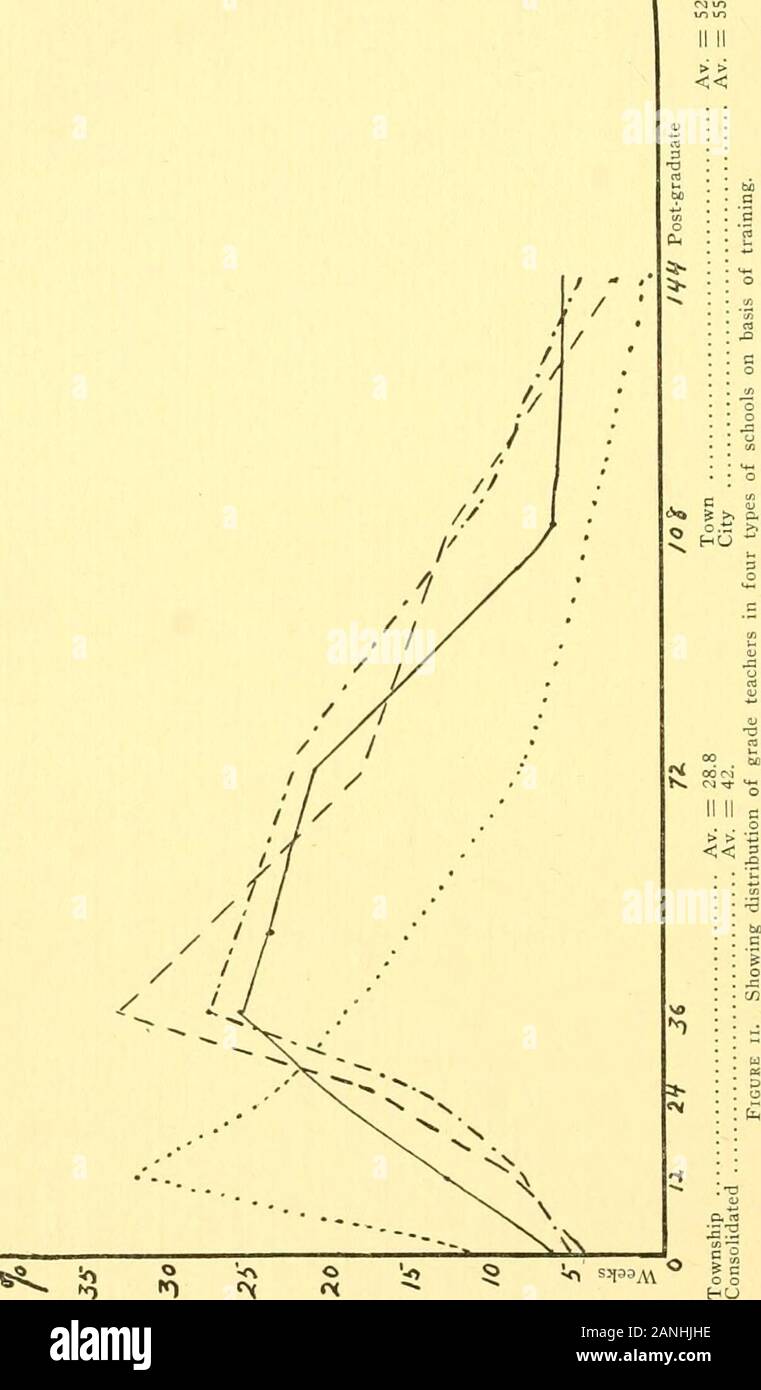A comparative study of the township, district, consolidated, town and city schools of Indiana . hepercentage of teachers with five or less years of experience, theless the percentage without academic and professional training. Onthe other hand it is probably true that from among the experiencedteachers in the rural schools only those who have shown somesuperior natural ability would be selected for positions in the townsand cities; so that the advantage gained by the rural school onaccount of the former is more than offset by the latter. TABLE XISummary of the Distribution of Grade Teachers on

Image details
Contributor:
The Reading Room / Alamy Stock PhotoImage ID:
2ANHJHEFile size:
7.1 MB (152.1 KB Compressed download)Releases:
Model - no | Property - noDo I need a release?Dimensions:
1210 x 2065 px | 20.5 x 35 cm | 8.1 x 13.8 inches | 150dpiMore information:
This image is a public domain image, which means either that copyright has expired in the image or the copyright holder has waived their copyright. Alamy charges you a fee for access to the high resolution copy of the image.
This image could have imperfections as it’s either historical or reportage.
A comparative study of the township, district, consolidated, town and city schools of Indiana . hepercentage of teachers with five or less years of experience, theless the percentage without academic and professional training. Onthe other hand it is probably true that from among the experiencedteachers in the rural schools only those who have shown somesuperior natural ability would be selected for positions in the townsand cities; so that the advantage gained by the rural school onaccount of the former is more than offset by the latter. TABLE XISummary of the Distribution of Grade Teachers on Basis of Training Corporation V a 0 Si 1 c0 00 1-V V u s 0 it 3•0 CO k. QC cc s Township ....Consolidated . Town City 3566 32 9912 13 54 7218 25 93 59 23 47 l-l 271926 137 14 6 18 100 3 5 4 30 2 28.8 42.052.0 55-1 TABLE XIIPercentile Distribution of Grade Teachers on Basis of Training Corporation S * Township . .Consolidated Town City • ? 11.36.75.0 S-2 32.0 13-59.3 8.7 23-3 19.1 8.7 20.2 2, 5.8 21.3 17.8 33-5 18.5 15-0 27.7 22.2 4.56.7 12.8 16.2 .9 5.6 2.8 4.8 •03 28.8 42.052.05S-I. ^5^ [so] A Comparative Study of the Four Types of Schools of Indiana 51 A summary of the training of teachers in the grades of the fourtypes of schools studied is given in Tables xi and xii. The rela-tion of distribution of teachers in one type of schools to theother types is shown graphically in Figure 11. From these tablesit is seen that there are twice as many teachers in the townshipdistrict schools who have had no professional training as in anyof the other types. That is to say, there are twice as many teachersin the rural schools of Indiana with five or more years of experiencethat have made no effort to fit themselves for the work they aretrying to do as are found in the consolidated, town, or city schools. The average training of all teachers in the rural schools istwenty-eight and eight-tenths weeks, while the average training ofall teachers in the consolidated schools is forty-two